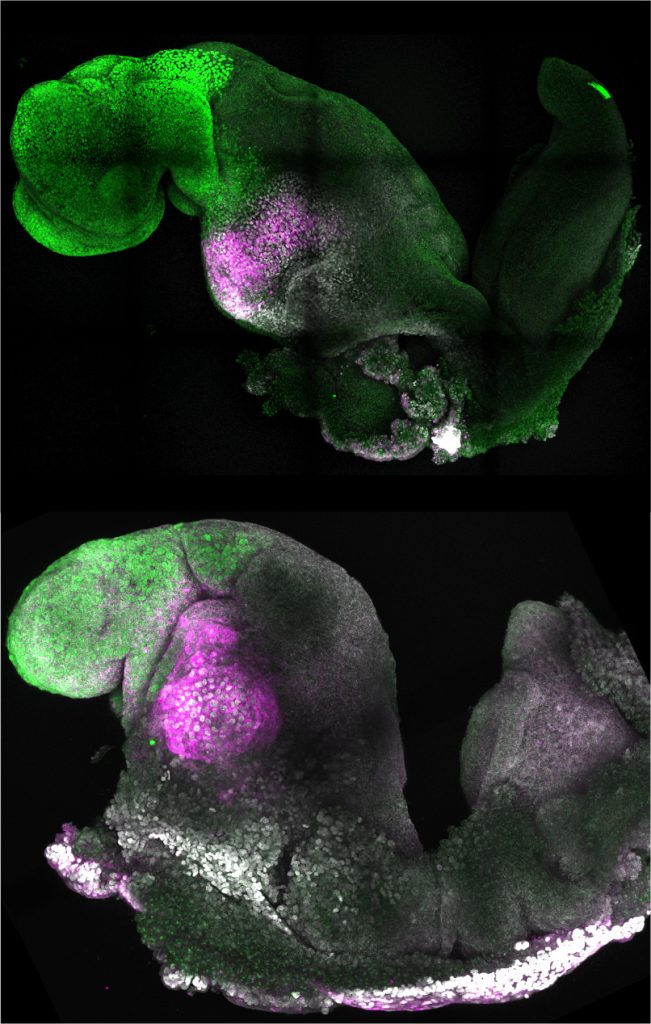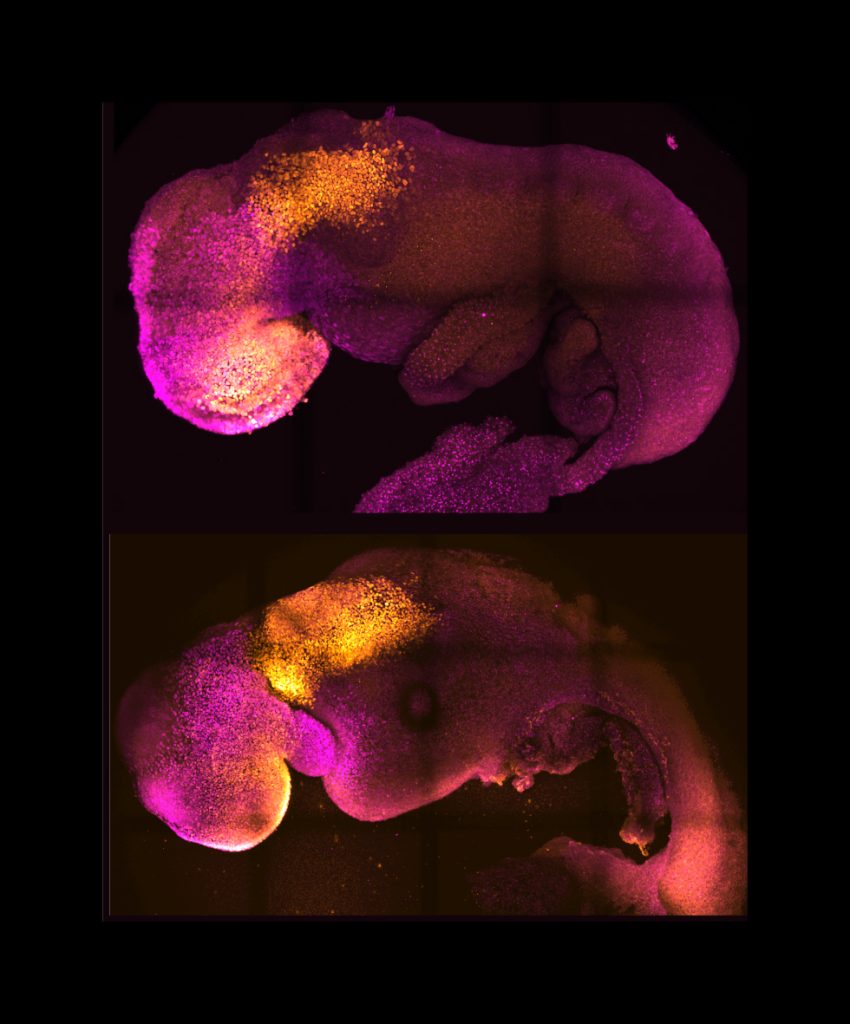‘How can a single cell, the fertilized egg, grow into the miracle of life – the baby?’ Developmental biologist Janet Rossant pens this question in a fascinating review of current embryological research that will shortly be published in the journal Developmental Biology.
Finding answers to this very fundamental question may tell us more about what it means to be human. For although many mammalian embryo’s look quite a bit like their human counterpart, there are lots of differences. And those differences mean that, although we can learn much about embryo’s from different model species like flies or mice, the only embryo that will tell us the full story is a human embryo.
Different questions

Of course, this leads to questions of ethics. Experiments with human embryos are strictly regulated, and limited to embryos of no more than 14 days old. Some groups in society reject all research that leads to the destruction of human embryos. In her review, Rossant lists what we can learn from studying our own embryonic development as an argument for this type of research. The list is long, with quite a few arguments based on understanding pathologies that start at this very early stage of life.
If research into embryonic development is needed, and human embryo research is limited, embryo models might offer a solution. As our knowledge of cell biology has increased, it has become possible to create human stem cells that are similar to very early embryonic cells. By combining different types of stem cells, embryo-like structures representing different stages of early development have been made. Rossant lists several models that could be used to study different questions surrounding human embryo development.
Pregnancy response
These models have two main advantages. First, the number of human embryos for research is limited, but stem cells for embryo models can be grown in unlimited quantities. This also allows for experimental interventions such as genetic modification. Second, the models are not complete and are therefore not seen as real embryos, even by those who oppose experiments with human embryos. This removes a lot of the ethical questions.
Rossant does include a warning, though. When embryo models become more complete, they will also come closer to being ‘real’ embryos. So-called blastoids, stem cell-generated models which resemble the early, pre-implantation embryo have been found to generate an ‘implantation/pregnancy response’ in mice and non-human primates, although there has been no further development of these embryo-like structures in the uterus.
Religious reasons

However, this may change, Rossant writes. ‘Blastoids, (..) if improved in terms of lineage fidelity and efficiency, might be considered as having full embryo potential in the future.’ She continues: ‘The question is how to determine that a stem cell model has crossed the bar from being a model to being an embryo is an intriguing debate.’
This is certainly true. Groups who oppose experiments with human embryos for religious reasons usually set the start of human life at conception. However, these stem cell models are generated by bringing together hundreds of stem cells from different lineages into a special growth medium. So, if such a stem cell construct could indeed grow into a fully formed individual, this begs the question of when its life started. And the answer to that question will likely have implications for how we see the ‘natural’ embryo as well.
Reference: Rossant, J., Why study human embryo development? Developmental Biology (2024) (preprint accepted for publication)